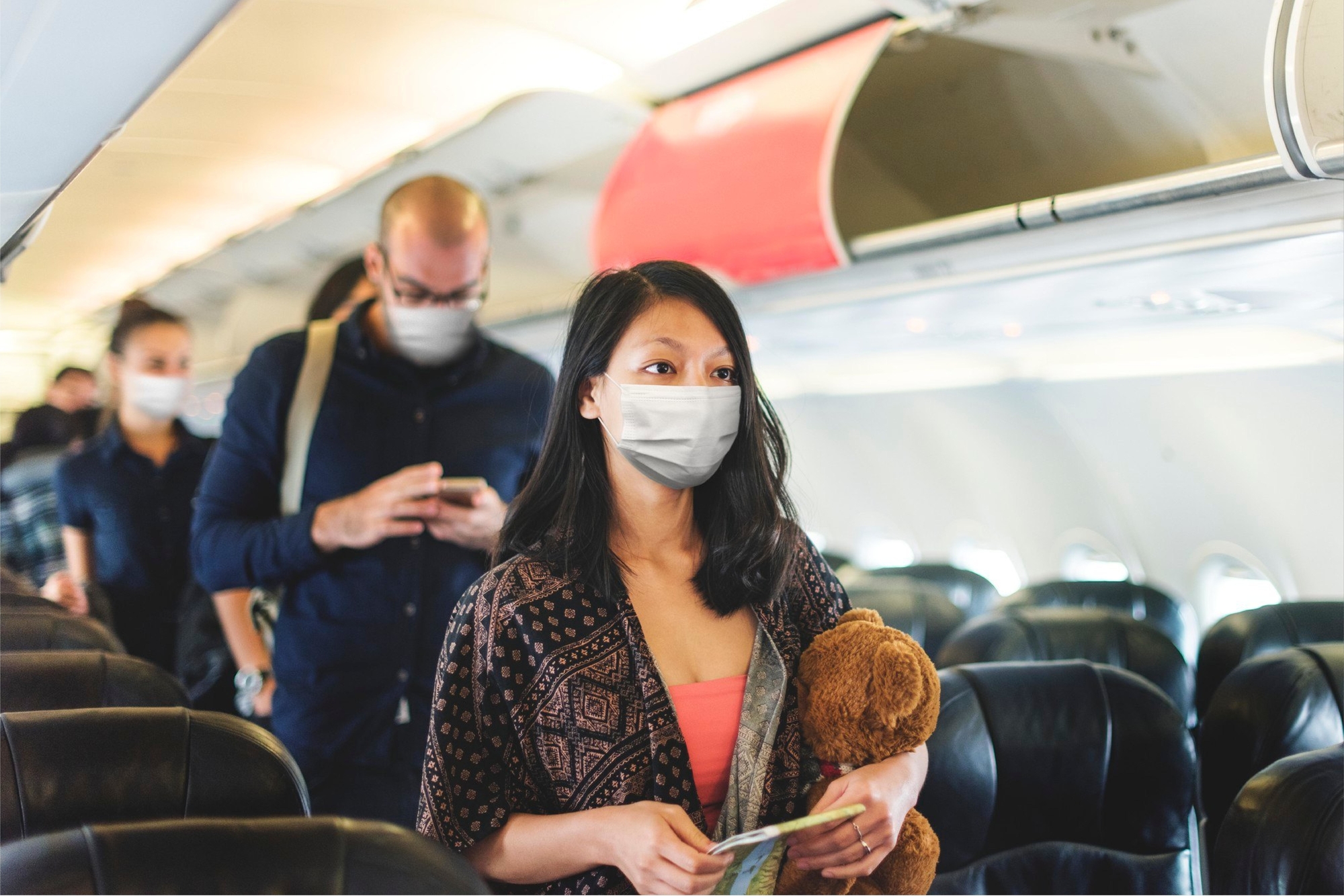Air travel is considered one of the main routes of transmission of respiratory viruses, and several cases of transmission of SARS-CoV-2 in flight have also been reported over the past year. It is now known that transmission of SARS-CoV-2 occurs mainly through direct contact with individuals carrying the virus and/or through droplets and the respiratory secretions they produce and spread by sneezing and coughing. Moreover, in addition to conventional routes of infection, some evidence shows that the eyes represent a route of entry for the coronavirus, in fact SARS-CoV-2 has a certain tropism for ocular tissues, including the conjunctiva, cornea and lacrimal sac. It is therefore clear that, even in the absence of ophthalmic manifestations, people travelling by air should not neglect the risk of ocular transmission of SARS-CoV-2.
Why can aircraft facilitate the transmission of the coronavirus?
In aircraft, in addition to the increased proximity between occupants, the enclosed space negatively affects the ocular surface. For example, the low humidity in the passenger compartment leads to particularly dry air that increases evaporation of the tear film, damaging the conjunctival epithelial barrier and thus making the eyes more susceptible to SARS-CoV-2 infection.
Certain systemic comorbidities, such as thyroid disorders and diabetes mellitus, may also further compromise ocular surface health, further increasing the risk of coronavirus infection in sufferers.
Furthermore, during air travel the risk of contracting SARS-CoV-2 through the eyes is increased by the fact that the droplets of positive individuals have a higher viral load than those of other respiratory viruses, because this coronavirus eliminates more viral particles through the upper respiratory tract.

How does SARS-CoV-2 infection occur via the eye?
SARS-CoV-2 infection by the ocular route occurs via the virus' S-glycoprotein, which, through the action of the trans-membrane protease serine 2 (TMPRSS2), expressed by the cornea and conjunctival epithelial cells, can bind to angiotensin-converting enzyme 2 (ACE2), which is the gateway through which the coronavirus enters cells and infects them.
Ophthalmic manifestations of COVID-19 include infections such as follicular conjunctivitis, epiphora (i.e. an excessive discharge of tears from the eyes), dry eyes and blurred vision.
What can be done to limit the risk of infection in a plane?
Airline passengers should follow the most common, well-established rules of hygiene, plus a few other specific precautions:
- - travellers taking flights should refrain from touching their eyes, nose and mouth before hand sanitisation to prevent contact transmission of SARS-CoV-2;
- - Travellers are advised to avoid wearing contact lenses during air travel and to use eye masks for sleeping, goggles and face shields;
- - The use of ocular lubricants can be helpful in keeping the eyes moist, thus reducing the risk of infection;
- - It is necessary to sanitise and wash hands frequently;
- - Maintaining adequate hydration and avoiding alcohol and caffeine are other useful protective measures;
- - Considering the high contagiousness of SARS-CoV-2, an average safety distance between passengers of two rows and two seats should be maintained in the passenger compartment whenever possible;
- - An eye assessment by a specialist before travelling can help the traveller take any additional precautions;
- - Self-medication is not recommended if the traveller develops ocular symptoms after the trip.
Bibliography:
Dr. Carmelo Chines
Direttore responsabile
